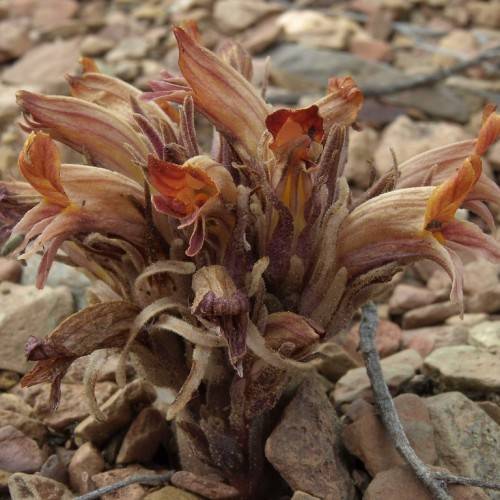
Flat-Topped Broomrape
Aphyllon corymbosum subsp. mutabile
Watering:
Frequent
Hardiness Zone:
Sun:
full sun,part shade
Leaf:
Yes
Growth Rate:
Low
Drought Tolerant:
Yes
Salt Tolerant:
Yes
Invasive:
Yes
Care Level:
Medium
watering
For Aleutian Cress (Aphragmus eschscholtzianus), it is recommended to water when the soil surface becomes dry, but never allow the plant to experience prolonged soil dryness. The amount of water given and frequency of waterings depend on the environmental conditions. If the air is humid and temperatures are cool, then you can water less frequently and with a smaller amount of water. If the air is dry and temperatures are warmer, then it will require more frequent and more generous watering.
sunlight
Aleutian Cress thrives with full sunlight, and should be grown in an area with at least 6 to 8 hours of direct sunlight each day. It is important to note that the plant should be shielded from strong winds and intense midday sun. When grown in full sun, Aleutian Cress will flower more often and develop a more lush appearance. It is important to rotate the plant on a regular basis to ensure that all sides are exposed to even sunlight.
pruning
Aleutian cress should be pruned in the spring and summer, typically starting in March and continuing until July. During this period, dead or damaged stems should be removed and any overcrowded stems should be thinned. A light pruning each year will help to encourage bushier growth. Pruning should be completed by July, as pruning later will reduce blooms in the following spring.
